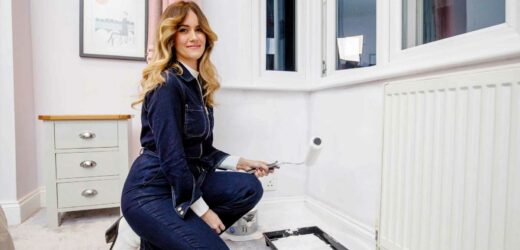A MOULDY home can cause serious problems for its residents, including allergies, breathing problems and rashes.
And shocking research by housing charity Shelter estimates that 11.8 million people in Britain are currently living in mouldy properties.
Typically, mould builds up in damp environments, so areas such as bathrooms and bedrooms, as well as places you dry washing, are particularly at risk.
DIY queen Whinnie Williams has joined forces with B&Q and Shelter to help people spot and treat mould as part of a new nationwide campaign.
B&Q carried out research which found that most people don’t know the dangers of living in a mouldy environment, with people aged 18-24 the least likely to be aware of the health impacts.
One in 10 people asked said that if they found mould they would do nothing, or only tackle it if it got particularly bad.
Another 17% said they would paint over it, which wouldn’t solve the problem.
If you are in a rented home, your landlord should fix your damp or mould issue if it's either caused by a repair problem or affecting your health and safety – and renters can take their landlords to court if it’s not fixed.
Most read in Money
OUT OF CREDIT Amazon U-turn as it scraps Visa credit card ban two days before rules kick in
HSBC app down leaving hundreds of customers unable to access accounts
I'm so addicted to the lottery I've just won my 4TH jackpot – a total of $4.6m
Why you should NEVER miss a council tax payment as millions fall behind on bills
Here are Whinnie’s top tips for tackling the problem:
Open the windows
It’s worth trying to avoid getting mould in the first place by taking small steps to prevent it, Whinnie says.
“One of the main reasons for mould in your house is damp and humidity,” she says. “But with regular ventilation, you will help keep it away.”
This could be as easy as making sure you open the windows every day to let fresh air in, and keep doors between rooms open.
Ensuring that air continuously circulates through your home will reduce condensation so the mould cannot grow.
Check your cupboards
Whinnie says: “Mould really likes damp and dark spaces, so make sure to check behind your cupboards and drawers.”
It can appear inside cupboards too, she says, and will potentially ruin clothing and shoes if left untreated.
“Ideally you should keep furniture two inches from the walls to provide ventilation,” she adds.
You can also open cupboard doors regularly to allow fresh air in.
Use a spray treatment
If you want to tackle mould yourself, you can use a mould removal foam spray on the affected areas, leave it to work, and then wipe and scrub away using a cloth and a kitchen scourer.
Make sure you wear protective clothing such as gloves, a mask and goggles, and put a dust sheet on the floor to protect your carpets.
“Once you’ve removed the mould, keep the surface well ventilated and let it dry,” Williams says.
You can buy mould spray treatments from most large supermarkets and DIY shops.
Prevent future problems
To stop mould coming back, you should paint the surface with anti-mould paint, or ask your landlord to do it if you’re renting.
“You can also use a temperature and humidity gauge to monitor moisture levels in your home,” Williams says. This will help you quickly spot if there is a problem.
One mum won £4,500 in compensation from her local council after her home became so damp that mushrooms started growing in her bedroom.
Here's how you could potentially do the same.
A new law means renters can sue landlords over cold and mouldy homes.
We pay for your stories!
Do you have a story for The Sun Online Money team?
Email us at [email protected]
Source: Read Full Article









